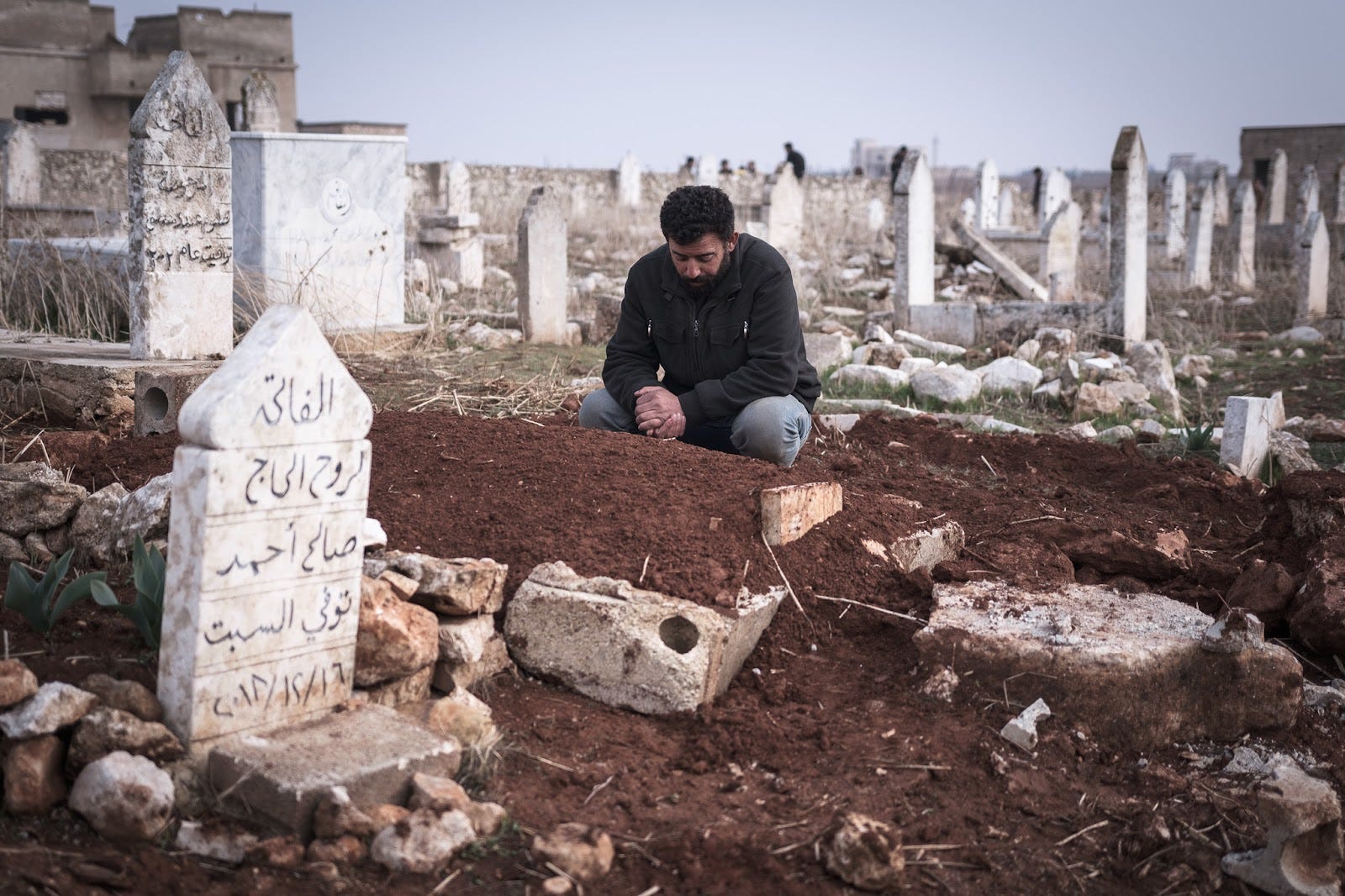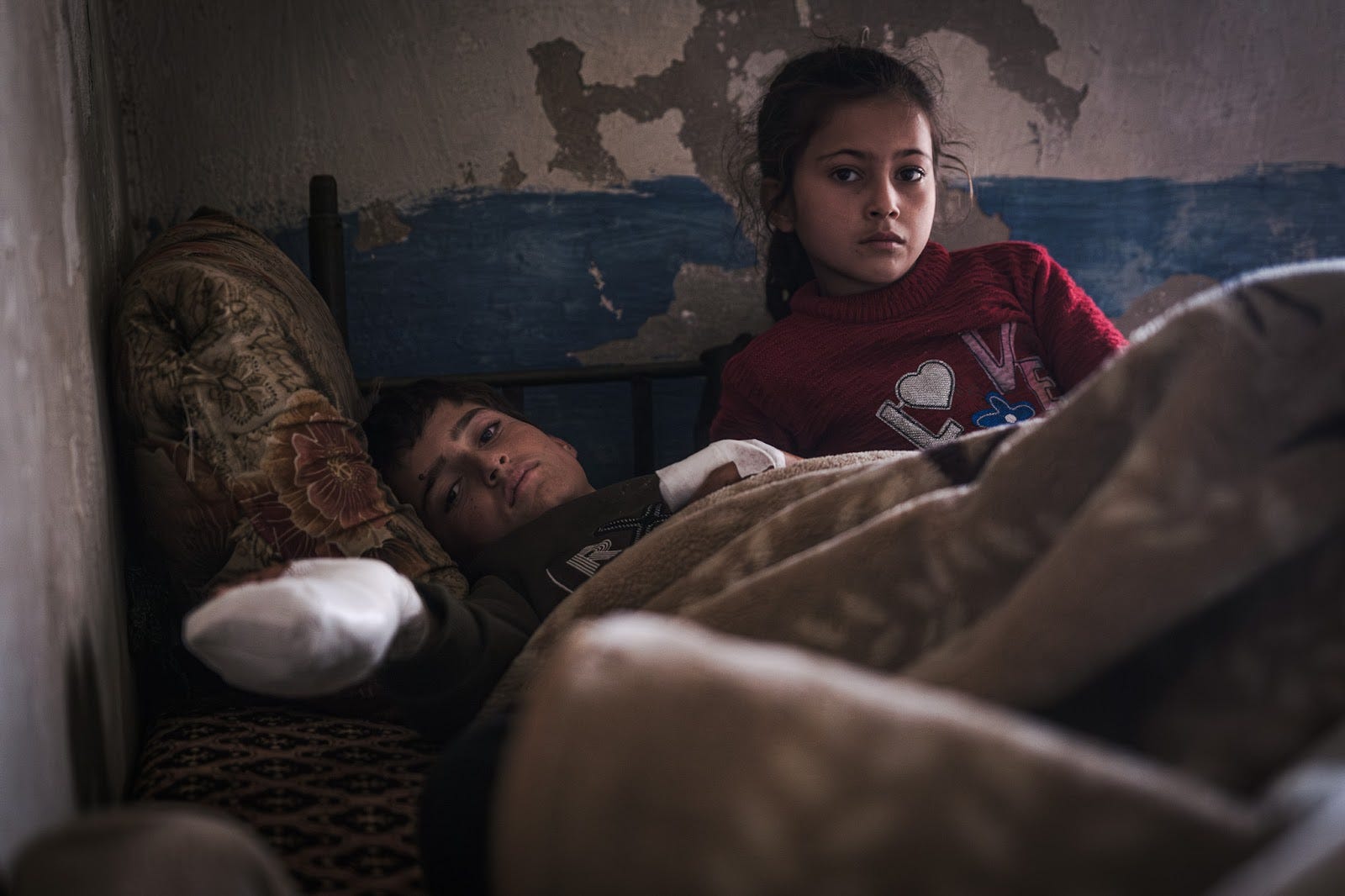As Syrians Return Home, Munitions From Assad’s War Are Still Killing Children
Hundreds of thousands of Syrians are expected to return within the next six months. Their roads home are filled with landmines left by years of war.
The Syrian Civil War, one of the most brutal conflicts of the twenty-first century, ended last December with the fall of the Assad regime. Extreme sectarian violence continues to plague parts of the country, but a concealed danger is also likely to continue to haunt Syrians for years to come: the huge number of landmines and unexploded bombs left over after the fighting. Hundreds of Syrians have already been killed and wounded by these unexploded ordinances, including children who frequently mistake them for toys.
The deadly legacy of the Syrian conflict offers a possible preview into the future of the Gaza Strip, where it is estimated that up to ten percent of Israeli munitions fired into the territory have failed to detonate. While Israel has resumed its massive aerial bombardment, many Palestinians have also been killed or wounded by unexploded ordinances, which have increased the danger of clearing away rubble and the already vast project of rebuilding the destroyed territory. Offered by a reporter in Syria, the following dispatch is a window into how the long-term environmental hazards of war can continue to claim lives long after the fire has stopped.
—Murtaza Hussain

After five years of living in a tent near the Turkish border, Abdo Ahmad Saleh was finally able to return to his childhood home in Aleppo’s countryside when a rebel military offensive drove back forces loyal to former Syrian president Bashar al-Assad late last year. Like many internally displaced Syrians and refugees who had fled the regime, Saleh was overjoyed at the prospect of coming home.
Shortly after returning, however, Abdo’s eight-year-old son, Mohammed Omar Saleh, ventured into a nearby field with a group of his cousins. As the children explored, they came across an unfamiliar object that they took to be a toy. The device they had found was, in fact, a landmine.
''When they were playing, we heard a huge explosion sound around nine in the morning. We went outside, running, and found pieces of flesh everywhere,'' said Omar Saleh Al-Ahmad, Mohammed’s uncle.
The device detonated, severely injuring Mohammed, along with seven of his young relatives. Mohammed suffered the most severe injuries, with fragments of metal embedded in his arm and head. Despite the doctors’ efforts to save his life, he died three days later in the hospital.
"Mohammed had shrapnel in the brain, and the doctors wanted to amputate his arm," Abdo recounts, standing beside his son’s grave after the funeral. "We only have God. Bashar left the country. I wish they would hang him; he is the reason for all this destruction. People are gathering the remains of their loved ones in plastic bags. He should be executed."
Omar Saleh Al-Ahmad’s seven-year-old son, Wardeh, was with Mohammed during the explosion. He suffered severe injuries where shrapnel tore through his limbs. The damage was so extensive that some of his fingers had to be amputated.
''Our village is full of mines,” Omar continued, as he stood next to the bed where Wardeh lay motionless, “We wish for help to remove them, but so far no teams came to clean up the area. We are afraid to go out. Everything is exploding—the land is full of mines.''

Since the beginning of the Syrian civil war in 2011, forces fighting for Assad have planted landmines to fortify their territories and contain the former rebel-stronghold province of Idlib, which has been controlled for years by Hay'at Tahrir al-Sham (HTS)—the militant group that now heads the new government. Militants opposed to the government have also deployed landmines and fired rounds that failed to explode in their conflict with regime forces. These operations have left a trail of anti-personnel landmines and unexploded ordnance (UXO) scattered across the old frontlines of the conflict. The explosives are largely concentrated near the Euphrates River, the outskirts of the capital, Damascus, and the Aleppo countryside.
The UN estimates that almost 260,000 Syrians have returned home since Assad’s fall, and 600,000 more are expected to come back to Syria in the next six months. This wave of return has resulted in a surge in landmine-related injuries in Syria, as the country struggles to take stock of the physical devastation and hazards left behind by fourteen years of war. Mine Action Review estimates that a third of Syrian communities are affected by some form of explosive contamination, though the total number of mines and UXO spread across Syria is ultimately unknown.
Syria is now deemed to be one of the most heavily mined countries in the world alongside Ukraine, Myanmar, and Yemen. As reported by Landmine and Cluster Munitions Monitor, a network of civil society NGOs, there have been a total of 1,379 civilian casualties from UXO since Russia’s 2022 invasion of Ukraine. Between December 2024 and February 2025 alone, the UN has documented forty-two civilian casualties due to mines and explosive remnants in Ukraine. By contrast, in Syria, 640 adults and children have been killed or injured across a span of only three months since the fall of the Assad regime, according to the Halo Trust, an NGO that demines landscapes across Syria and around the world. This amounts to nearly fifteen times more mine-related casualties than Ukraine during the same time period.
''I’ve never seen anything quite like it,'' said Damian O’Brien, the program manager for Halo Trust in Syria. In a press release from December of last year, O’Brien summarized the situation: ''Tens of thousands of people are passing through heavily mined areas on a daily basis causing unnecessary fatal accidents. The fighting forces have melted away from the front lines, leaving vast areas littered with explosives. Clearing the debris of war is fundamental to getting the country back on its feet.''
Compounding the danger, landmines and unexploded munitions have been indiscriminately scattered across fields, villages, and towns. In a small village in Aleppo city, locals told Drop Site that they found UXO inside their homes. On March 16, concealed ordinances exploded in a residential building in the port city of Latakia, leaving twenty-five people dead, including women and children, with fourteen people injured.
At an underground hospital in the province of Idlib, the doctors who treated Mohammed and his relatives said that the ongoing stream of trauma cases, previously resulting from airstrikes by the Assad regime and Russia, have now been replaced by individuals with mine and UXO injuries. Children are especially vulnerable. ''In general, we see big injuries,'' said Mahmoud Al-Sayyah, a surgeon from Atareb Hospital. ''A two centimetre fracture in my skull is okay, but two centimeters in a child is half the thickness of his bone. A child can't withstand injuries like an adult.''

Despite the severity of the issue, the central government in Damascus, led by interim President Ahmed Al-Shaara, has not announced any nationwide plans to clear Syria from mines and other unexploded ordinances. In order to remove these explosives from the fields, the government relies on help from organizations such as the Halo Trust and the White Helmets, another NGO funded by foreign governments and international organizations. Yet the lack of funding means these organizations are severely understaffed, with their efforts further jeopardized by foreign aid cuts by the Trump administration and the British government. Given this slow pace of removal, it could take decades to properly dispose of the mines and UXO across Syria.
US President Donald Trump's recent USAID funding freeze could especially exacerbate the situation for the chronically underfunded country. The US agency currently provides about a quarter of all international aid into Syria. During a video appearance at the Ninth Annual Brussels Conference on Syria hosted by the EU on March 17, UN Secretary General, Antonio Guterres, implored states to ''move with urgency to invest in Syria’s future by expanding humanitarian support and reconsidering any cuts to funding at this critical time.'' Without urgent international action, the longstanding consequences of Assad’s war will continue to be felt on the ground.
In a village in the Idlib countryside, Mohammed Abd Al-Kareem Talfah, a 34-year-old team leader working for the White Helmets who covers Idlib and the province of Aleppo, complained that his team has neither the necessary tools nor manpower to do its job appropriately. His team found an unexploded artillery shell in the middle of the road and a kamikaze drone, both of which could be fatal to occupants of passing cars, as well as children who come across them. ''Currently, we need another fully equipped team. This is urgent. We are working beyond our capabilities,'' Talfah told Drop Site News on his break. ''We need more logistics equipment; more modern equipment, such as SUV vehicles to access these areas in the mountains; and more team members working with us.''
Talfah says that people continue to rush back to their old homes, often disregarding warnings about the dangers posed by mines and unexploded munitions. ''This is a struggle,'' he claims. ''They are not listening to us. People have a sentimental bond with their homes after being forced to flee for over fourteen years. They rush back to their homes even with the danger of losing a limb or even their lives.''





Grateful to Drop Site for news I don't see anywhere else.